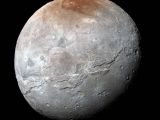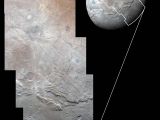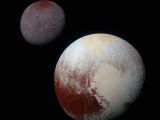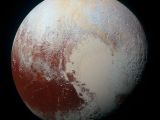Remember when NASA's New Horizons probe flew by dwarf planet Pluto and its moons back in July? Well, the spacecraft has delivered yet another set of images it obtained during the historic encounter.
The views, released by the US space agency this Thursday and available in the gallery below, bring into focus landscapes on Charon, Pluto's largest moon and the largest satellite relative to its host planet in our Solar System.
Charon's topography is surprisingly complex
Pluto's moon Charon has a diameter of 1,172 kilometers (728 miles), which makes it about half the size of the dwarf planet. When they sent New Horizons to have a close look at this orb at the edge of the Solar System, NASA scientists expected to find a plain, crater-battered world.
As it turns out, their predictions about what Charon looks like up close were seriously off. This moon of Pluto is not some tedious ball in space. Au contraire, its topography is surprisingly complex.
The images delivered by New Horizons show features like mountains and canyons, even evidence of landslides and surface-color variations. This hints that the orb has experienced a restless history.
“NASA's New Horizons spacecraft has returned the best color and the highest resolution images yet of Pluto's largest moon, Charon - these pictures show a surprisingly complex and violent history,” mission scientists explain in a report accompanying the newly released views of Charon.
“We thought the probability of seeing such interesting features on this satellite of a world at the far edge of our Solar System was low, but I couldn't be more delighted with what we see,” adds Ross Beyer, a researcher with the SETI Institute and NASA's Ames Research Center.
There's a great big canyon system on Charon
Of the features documented by the New Horizons probe on the surface of Pluto's moon Charon, the most impressive is a gargantuan canyon system measuring about 1,000 miles (1,600 kilometers) from one end to the other.
This system is four times longer than the Grand Canyon and, in some places, twice as deep. Just to put things into perspective, the Grand Canyon's reaches 6,093 feet (1,857 meters) at its deepest.
In fact, Charon's canyon system is so big it kind of makes it look like, at some point in its history, the orb's entire crust somehow cracked. “It looks like the entire crust of Charon has been split open,” says researcher John Spencer.
Further investigations are needed to confirm this theory, but scientists suspect the many canyons on Charon formed when an internal water ocean froze and the subsequent increase in volume made the orb's crust pop open.
Above and below this canyon system are plains. The ones to the north carry more large craters than the ones to the south, which suggests that they are older. Then, there are also grooves and faint ridges, likely shaped by winds.
New Horizons will continue to beam back data and images obtained during its flyby of the Pluto system for many months to come, so scientists expect they'll soon know more about Charon and how it's transformed over the ages.
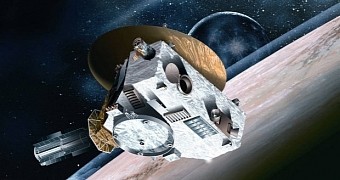
 14 DAY TRIAL //
14 DAY TRIAL // 

